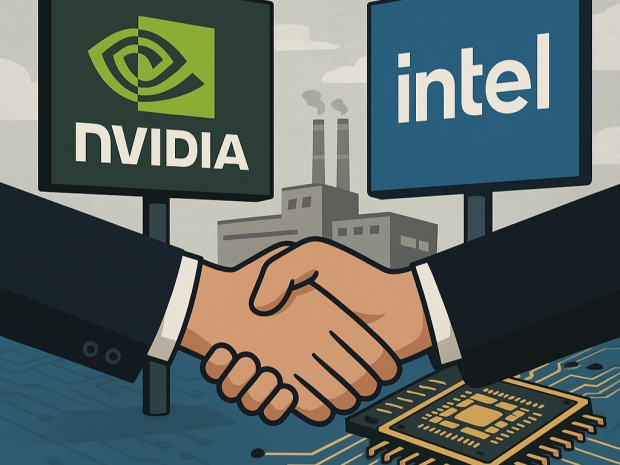UBS analyst Timothy Arcuri claims Nvidia is "closer" to inking a deal with Intel to fab chips using its bleeding-edge 18A (1.8 nm-class) process than Broadcom. That move, if confirmed, would be Chipzilla’s most high-profile win since it started hawking foundry services to outside clients in a bid to compete with TSMC and Samsung.
Chipzilla may also compete more closely with TSMC by improving its packaging technologies. Its Embedded Multi-Die Interconnect Bridge platform could bring Intel's offerings closer to TSMC's CoWoS-L, enhancing its appeal to Nvidia and other high-performance customers.
In addition, Intel's collaboration with United Microelectronics is reportedly progressing well, with production possibly beginning in the second half of 2026. This could position the Intel–UMC partnership as a secondary high-voltage FinFET source behind TSMC, and potentially enable a ramp into future Apple products.
Chipzilla is also prepping a souped-up variant called 18A-P, promising either more speed at the same wattage or lower power with the same muscle—appealing to fabless firms like Nvidia that want both performance and energy efficiency without the headaches of node immaturity.
AMD is kicking the tires on Intel’s 18A node too, though where that stands is anyone’s guess. If Chipzilla can woo both GPU titans, it could mark a comeback moment not seen since the Pentium glory days.
New Intel CEO Lip-Bu Tan is expected to double down on this foundry-first focus at Intel’s Vision event on March 31 in Las Vegas. Tan's background and industry ties make him the kind of operator who might get Nvidia and Broadcom to sign the dotted line—a feat neither Pat [kicking] Gelsinger nor the revolving door of interim CEOs managed to lock down.
If Nvidia goes through with it, Chipzilla’s foundry arm could stop being a punchline and start playing a significant role again. However, it all hinges on execution—and whether Intel can maintain high wafer yields and low defect rates.




